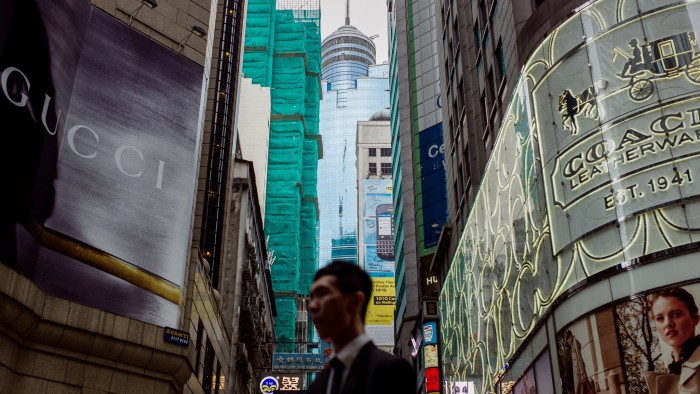Hong Kong luxury watch sales tumble as Chinese travel beyond

Roula Khalaf, Editor of the FT, selects her favourite stories in this weekly newsletter.
Watchmakers gather for the Baselworld fair against a gloomy economic backdrop. The luxury timepieces industry is weathering not just sluggish world growth and a Chinese economic slowdown. It also faces particular difficulties in Hong Kong, the industry’s most important marketplace, and a strong Swiss franc — which has sharply sent up the cost of producing luxury watches in Switzerland.
With sales dependent on economic optimism, there is nervousness about the rest of 2016. The Paris-based Organisation for Economic Cooperation and Development expects the world economy to grow by just 3 per cent — the same as in 2015, which was the slowest pace in five years and well below long-run averages. Demand for luxury watches in energy-exporting economies has been hit by the precipitous fall in oil prices.
“It looks like the outlook may even have worsened since the end of 2015,” says Julie Saussier, consumer industries analyst at Credit Suisse. “Hong Kong is still faring badly, and in Europe you have had the effects of November’s terrorism attacks in Paris.”
What matters crucially will be demand from Chinese consumers. The industry has been hit by the crackdown on “gifting” as part of the country’s anti-corruption drive. From peak to trough, watch sales in mainland China fell by about 30 per cent, according to industry estimates.
The good news is that the one-off effect of the clampdown has fed through. Year-on-year growth in Swiss exports to mainland China turned positive at the end of last year. Even if China’s economy expands at a slower rate, luxury watches still have cachet with the country’s consumers. The problem is that Chinese spending patterns are shifting.
Most under pressure are operations in Hong Kong, long a hub for sales across Asia. Hong Kong is feeling the effects of overstocking, which have yet to be worked through, as well as a stronger US dollar, to which the Hong Kong dollar is pegged. Swiss watch exports to Hong Kong in January were 33 per cent lower than a year earlier, according to the Federation of the Swiss Watch Industry.
A turnround in Hong Kong may be some way off. Thomas Chauvet, luxury goods analyst at Citigroup, reports a “profound change” in Chinese perceptions of Hong Kong. “It does not seem to be an attractive tourist and shopping destination any more,” he says.
“Chinese people’s natural inclination for travel, rising purchasing power and greater ability to travel individually and further out internationally are likely to continue to encourage them to discover other parts of Asia as well as Europe.”
Reflecting the shifts in demand, the Geneva-based Salon International de la Haute Horlogerie announced in February that its Hong Kong-based Watches & Wonders exhibition would in future be held biennially, with its organisers examining other destinations which could alternate with Hong Kong.
Weaker sales in Hong Kong have been offset by improvements elsewhere. While US watch sales disappointed last year on the back of the stronger dollar — and probably the rise of smartwatches — Japan and South Korea have benefited from Chinese tourist flows.
“There is a ‘bottoming out’ in global luxury watches but a lot of the business is wholesale, which tends to lag behind the pick-up in the cycle,” says Scilla Huang Sun, a sector specialist at GAM Investment Management in Zürich.
In Switzerland, the effects of the tougher conditions have been exacerbated by the strength of the Swiss currency since January 15, 2015, when the country’s central bank gave up trying to cap its value against the euro.
Swatch complains that the appreciation of the franc has caused “significant shifts in sales in the markets, as well as a marked distortion of the international product pricing structure”. Swatch’s sales fell 3 per cent last year to SFr8.45bn (£6.1bn) at current exchange rates. Despite headwinds, Swatch said it had actually increased the number of employees in Switzerland.
Meanwhile, Richemont, whose brands include Cartier and Montblanc, has warned its 9,000 employees in Switzerland that it is looking to cut up to 350 watchmaking jobs locally over the next 12 months.
The positive interpretation of job cuts at Richemont is that they show a greater nimbleness. “They are being more proactive and flexible with costs, and it doesn’t mean that prospects for the industry have changed,” says Ms Saussier at Credit Suisse.
Comments